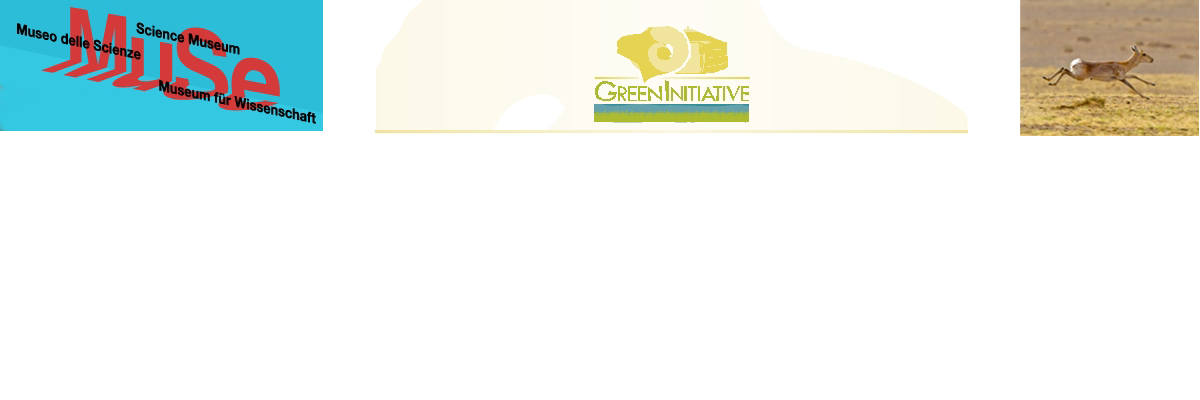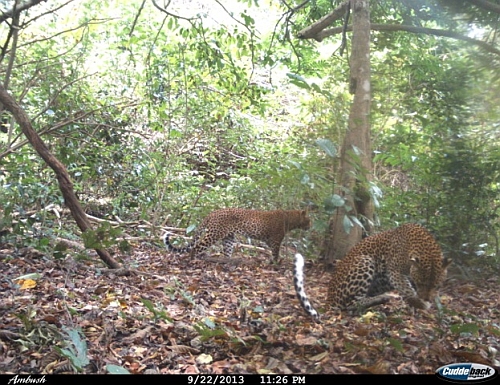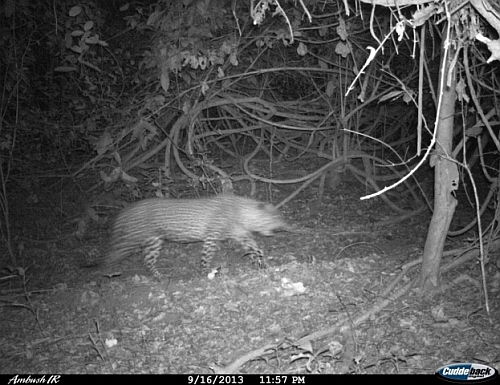| PROGETTO LEOPARDO IN TANZANIA |
| PRIMO AGGIORNAMENTO Scarica il report SECONDO AGGIORNAMENTO È stata completata la prima sessione di fototrappolaggio nella parte meridionale del Parco Nazionale dei monti Udzungwa e l’adiacente Riserva Forestale Kilombero. Nel complesso è stata coperta una superficie di circa 110 km2 tramite 26 stazioni di fototrappolaggio, in cui ogni sito consisteva di due fototrappole, una con flash allo xeno e una con illuminatore a infrarossi situate da entrambi i lati di un percorso di origine animale e disposte ad un angolo di 90 gradi dallo stesso. Da un primo screening dei dati, sono risultate almeno 89 foto di leopardi! Insieme a molte altre specie di mammiferi. L’identificazione preliminare delle foto scattate dalla foto trappola ai leopardi indica che la zona è abitata da almeno 12 individui, 6 maschi, 4 femmine e 2 il cui genere non può essere determinato. Valutando le immagini che sono venute fuori al primo turno, è chiaro che le fototrappole a infrarossi hanno velocità dell’otturatore più lenta rispetto a quelle con flash bianco, che si traduce in foto sfocate che rendono l’identificazione dei leopardi molto difficile. Dopo ulteriori test è stato deciso di utilizzare la modalità video sulle fototrappole IR, nel tentativo di ottenere migliori immagini / fotogrammi per identificare più facilmente i leopardi ripresi. |
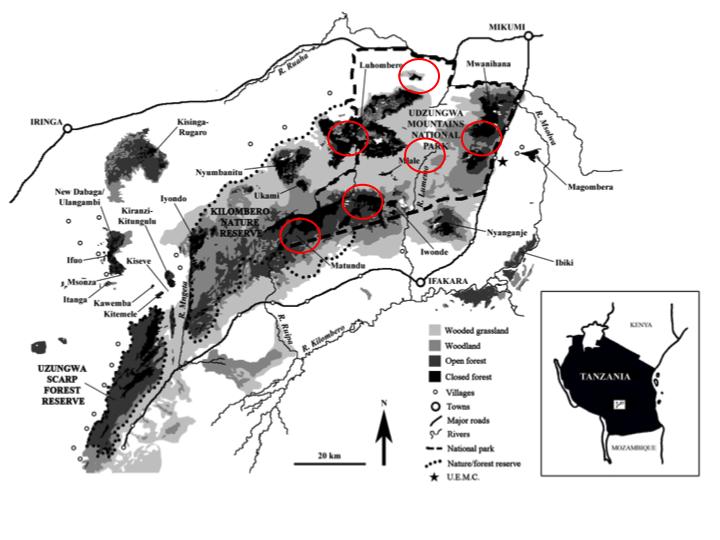
SECONDO AGGIORNAMENTO
Questa seconda indagine ha riguardato la parte nord – nord-orientale del complesso forestale di Matundu, conosciuto localmente come Lumemo e costituito principalmente da foresta pluviale secondaria che va da 400 a 600 metri sul livello del mare, confinando con un territorio con foreste a miombo più asciutte e aperte. Questo sito è a meno di 10 km di distanza dal primo sito .
Lo stesso totale di 26 stazioni- fototrappola (2 fototrappole per ognilatodellapista) sono state collocate nell’area, coprendo una superficie di circa 110 km quadrati. Durante l’indagine sono state riscontrate condizioni ambientali molto aride ed erano visibili pochissimi segni di presenza del leopardo. Tuttavia quando le fototrappole sono state recuperate, i video e le foto registrate hanno di nuovo evidenziato la presenza di un numero molto elevato di leopardi.
L’identificazione iniziale indica che 4 maschi e 4 femmine tra cui una femmina con un giovane cucciolo, abitano la zona, fatto che come già per il primo sito orrisponde a un’altissima densità. È interessante notare che sembra che non ci sia alcuna sovrapposizione tra gli individui identificati nella parte meridionale di Matundu e quelli rilevati nella parte settentrionale del complesso forestale Matundu.
Sul lato tecnico, abbiamo cambiato l’impostazione delle fototrappole IRPLUS dalla modalità fotografica alla modalità video, ottenendo in tal modo una visione più dettagliata per l’identificazione, il comportamento e l’individuazione di gruppi di più animali che si muovono insieme.
Tuttavia, la risoluzione nelle sequenze video risulta inferiore a quella relativa alle fototrappole Cuddeback Ambush, quindi è più difficile l’identificazione degli individui, che si basa sul pattern delle macchie presenti sui lati interiori delle zampe.
La prossima stagione di lavoro sul campo inizierà nel mese di giugno 2014 e si rivolgerà alle foreste asciutte e umide dell’altopiano presenti nelle parti centrali , settentrionali e occidentali del parco nazionale, dove puntiamo a coprire 4 siti da giugno fino a dicembre.
Si allegano le immagini di questo secondo round di lavoro su campo .
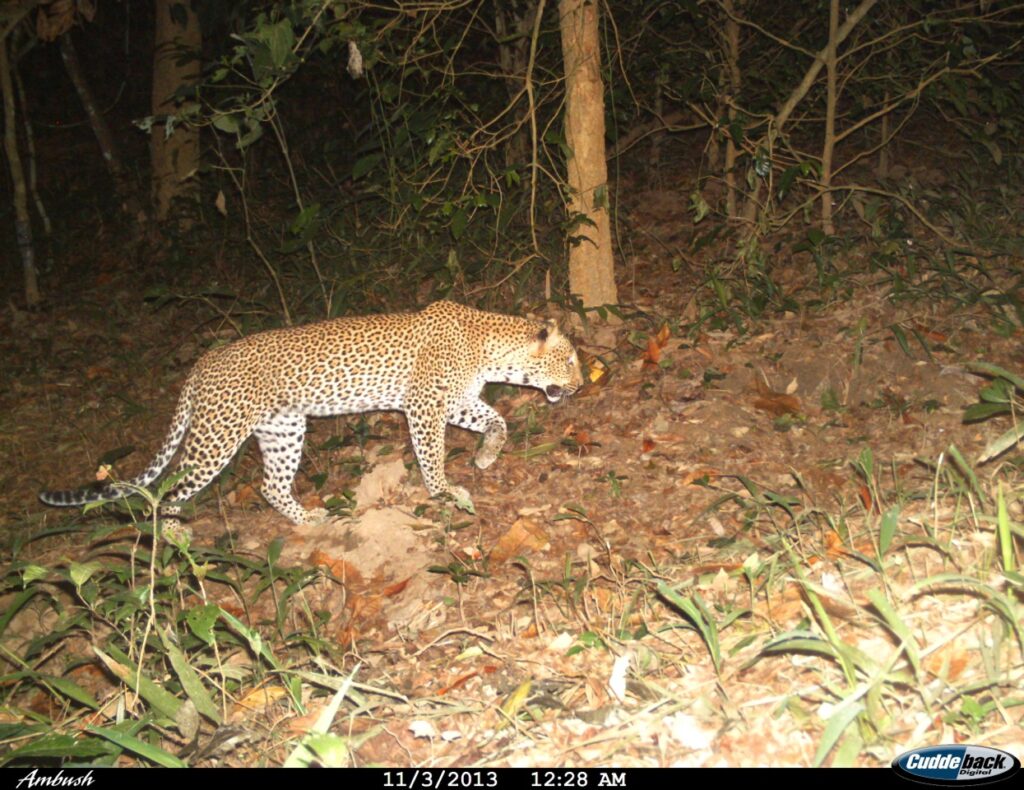
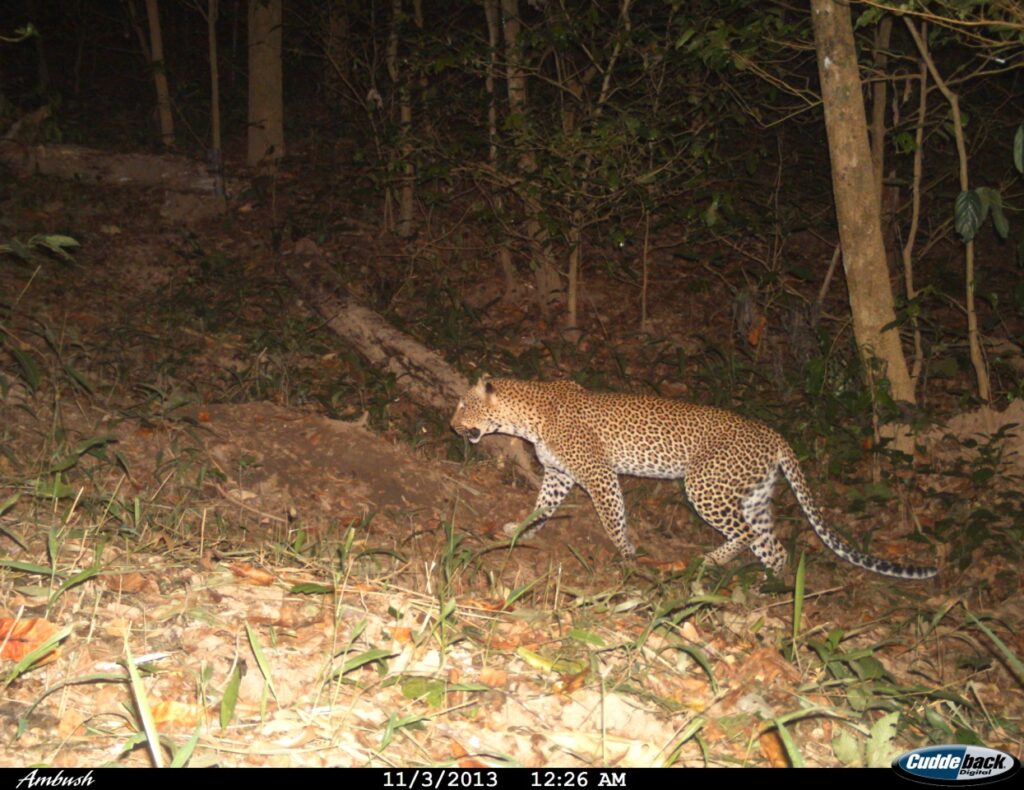
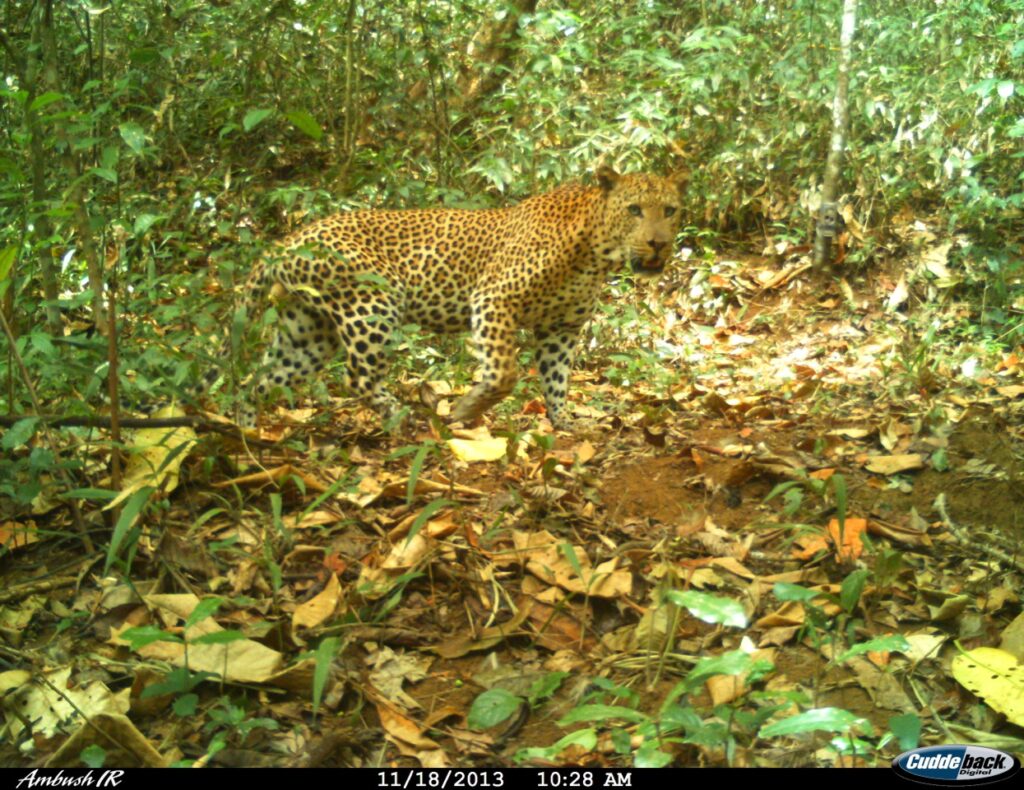
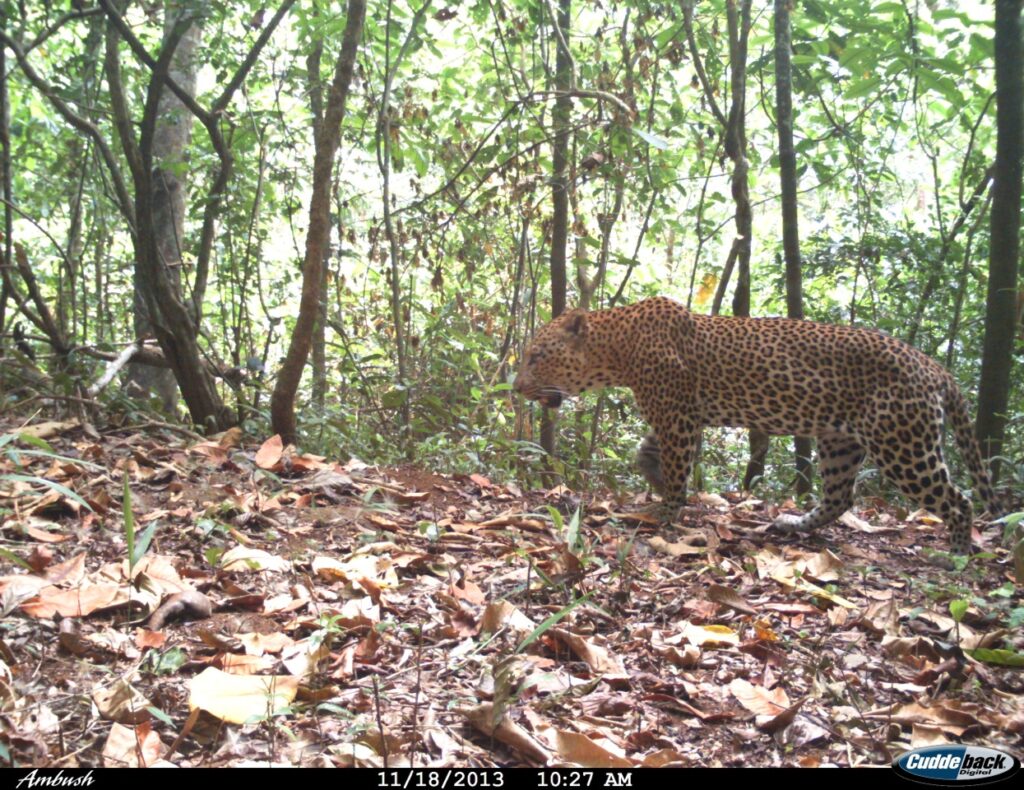

TERZO AGGIORNAMENTO
28 luglio 2014
Terzo report dell’attività di campo del Progetto leopardo nei monti Udzungwa.
Di Rasmus Gren Havmøller (Università di Copenhagen) e Francesco Rovero (MUSE-Museo delle Scienze)
La raccolta dei dati di fototrappolaggio è entrata nel suo secondo anno, questa volta nella parte più settentrionale del parco, nota come Mbatwa, che è semi-arida e composta da foresta mista di baobab, Commiphora – Brachystegia e acacia, così come da praterie di alta quota che vanno da 500 metri sul livello del mare fino a quasi 2000m.
Durante il periodo tra il 13 e il 20 giugno, insieme con il team di assistenti di campo e con rangers armati, abbiamo (Rasmus e Francesco) installato 34 stazioni di fototrrappolaggio (ciascuna composta da 2 fototrappole) in una griglia predefinita di 2 km2 che copre un’area di 130 km2 in un gradiente altitudinale di 1500 m in un periodo di 8 giorni. Dopo aver impostato insieme le prime fototrappole, ci siamo divisi in due squadre per poter impostare fino a 8 stazioni di fototrappolaggio ogni giorno.
Durante stati rilevati segni di presenza di leopardo, così come di molti altri mammiferi, ed i risultati hanno rivelato la presenza di 6 individui all’interno dell’area oggetto dell’indagine, di cui 4 maschi e 2 femmine, che però sono stati registrati in solo 10 delle 34 stazioni-fototrappola, per un totale di 26 ricatture dei medesimi individui.
Questo è in contrasto con le due precedenti indagini condotte nel 2013 nei siti di foresta pluviale planiziale (Ruipa e Lumemo), in cui il fototrappolaggio ha registrato la presenza di 14 individui e 10 individui rispettivamente e un totale di 63 ricatture. In attesa di analisi di cattura-ricattura più approfondite, studi analitici preliminari sui dati dei primi 2 siti campionati nel 2013 hanno stimato che ci sono 5,5 leopardi per 100 km2 di foresta pluviale di pianura. Ci aspettiamo più basse densità di leopardi nella zona semi-arida del nord rispetto alla foresta pluviale.
È interessante notare però come la terza indagine nella zona semi-arida abbia rilevato 30 specie di mammiferi, catturati nelle foto-trappole, a differenza di 32 specie catturate nella foresta pluviale. Tra le specie rilevate, l’indagine ha prodotto il primo record di presenza di oreotrago (Oreotragus oreotragus) nel parco nazionale e riconfermando che l’elusivo caracal (Felis caracal), il pangolino del Capo (Smutsia temminckii) e l’ antilope nera (Hippotragus niger) sono presenti lungo questi aridi pendii settentrionali del parco.
Questa terza indagine è quindi riuscita con successo, con l’eccezione che due fototrappole (di una stazione) sono state rubate, presumibilmente da bracconieri e una terza è stata distrutta da un elefante.
Ricerche future: la sessione successiva di fototrappolaggio è iniziata il 26 luglio nella grande valle tra i due principali complessi forestali di montagna della parte centrale del parco e durerà fino ad agosto. Dopo questa sessione, i cui risultati saranno riportati nella prossima relazione, le indagini saranno condotte nelle remote foreste montane occidentali del Ndundulu-Luhomero (foresta a forma di farfalla, a ovest sulla mappa in figura 1) in settembre-ottobre per poi chiudere lo studio nella foresta Mwanihana nell’est in dicembre 2014 – gennaio 2015.
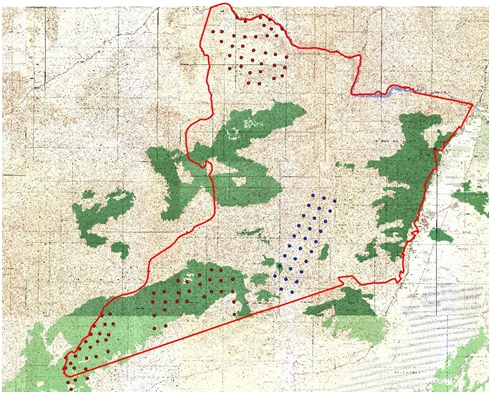
Mappa del Parco Nazionale dei Monti Udzungwa. Nell’estremo sud le due griglie di fototrappolaggio di Ruipa e Lumemo (punti rossi) nella foresta pluviale di pianura che sono state campionate nel 2013. Nel nord le stazioni di fototrappolaggio nel semi-arido Mbatwa (punti rossi) che sono descritte nella presente relazione. I punti blu sono le griglie previste per l’indagine in corso.

Estimating Species Richness and Modelling Habitat
Preferences of Tropical Forest Mammals from Camera Trap Data


Udzungwa Leopard Project
Final field report
12 January 2015
By Rasmus Gren Havmøller (University of Copenhagen, Denmark) and Francesco Rovero (MUSE-Museo delle Scienze, Italy)

Overview of the data collection and species captured
With sampling in Mwanihana forest, the sixth and last of the field sites chosen for data collection, fieldwork for this project was completed resulting in nearly 600 km2 of the Udzungwa Mountains National Park and adjacent forests having been surveyed through camera trapping specifically for leopards (Panthera pardus), see Figure 1 for a map of the overall sampling achieved.
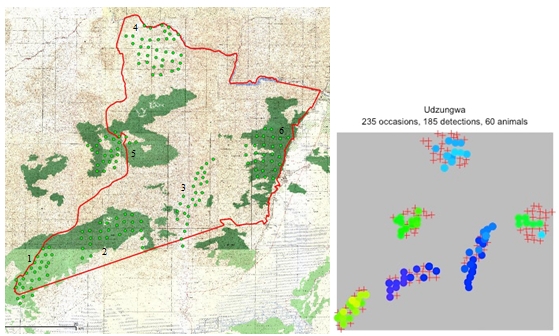
Figure 1. Map of the sampling grids. Left: National Park boarder is highlighted in red. (1 & 2) in Matundu forest, a lowland rainforest (300-500m asl). (3) Lumemo river in a valley of dry miombo forest (300-500m asl). (4) Mbatwa area is in the rainshadow of the mountains and is in some places almost a semi dessert with dry baobab forest, rising in elevation (500-1900m asl) to Acacia-Commiphora forest and finally grasslands. (5). Ndundulu-Luhomero is a montane wet forest where the grey-faced sengi (Rhynchocyon udzungwensis) and the kipunji monkey (Rungwecebus kipunji) were both discovered within the last decade. Furthest to the east the Mwanihana forest (6) rises unbroken from 300-2100m asl. Right: projection of map from the spatial analysis, colours indicating leopards captures red crosses a camera-trap with no leopard captured. Overall leopards were captured in 46.3% of all camera-trap stations.
In total, 168 paired camera-trap stations (336 camera-traps) have been setup during the six surveys covering all major habitat types in the area (lowland rainforest, montane rainforest, dry miombo forest, high altitude grasslands, acacia commiphora forest and baobab forest). Of the 168 camera-trap stations placed in the Udzungwa Mountains, only 4 failed to record data either because they were stolen by poacher or destroyed by elephants.
The combined effort of the camera-trapping has resulted in nearly 5,000 camera-trap days that produced approximately 30,000 photos and videos overall. Of the 164 camera-trap stations that collected data, leopards were captured at 76 stations (46.3%) and a total of 60 different individual leopards have been detected as identified them from the coat pattern. Interestingly, we found no individuals appearing at more than one site, even if some of them were not very far apart. In Matundu forest, for example, the first area sampled, closest camera traps in the two adjacent sites were only some 8 km apart.
In addition to the leopard, 50 more species of medium-to-large mammals have been recorded in the camera-traps, including two species (bush duiker: Sylvicapra grimmia and klipspringer: Oreotragus oreotragus, see figures 2 & 6) that were not previously been reported with certainty in the national park, and the Udzungwas overall. Also worth mentioning are the camera trap photo of sable antelope (Hippotragus niger) (see figure 3), ground pangolin (Manis temminckii) (see figure 5) and caracal (Caracal caracal) (see figure 4), which are all very rarely seen.
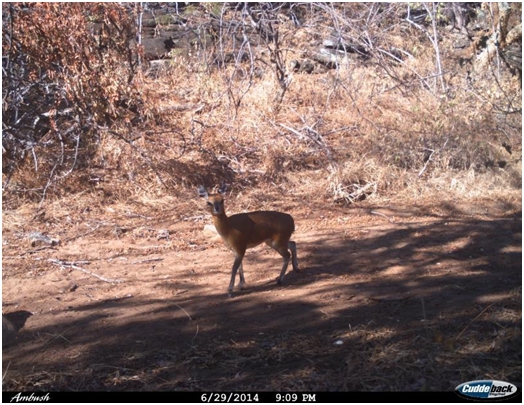
Figure 2. Camera-trap photo of klipspringer (Oreotragus oreotragus) from Mbatwa, a species suspected to be in Udzungwa but not confirmed until now.
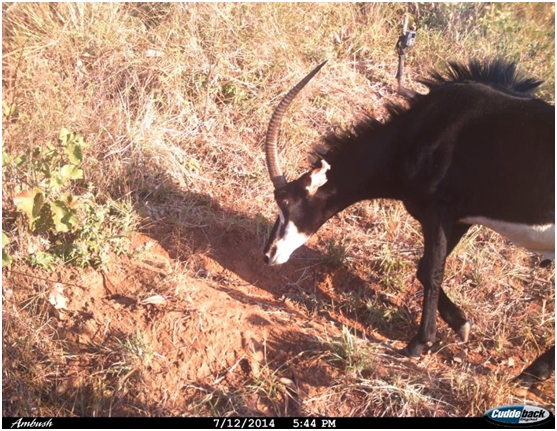
Figure 3. Camera-trap photo of sable antelope (Hippotragus niger) from Mbatwa, a very shy and seldom seen species.
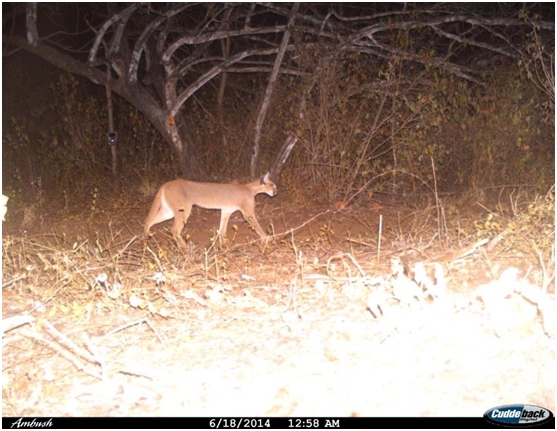
Figure 4. Camera-trap photo of caracal (Caracal caracal) from Mbatwa. Wide-spread throughout sub-Saharan Africa this medium size cat is rarely ever seen and nothing is known about them in Udzungwa.
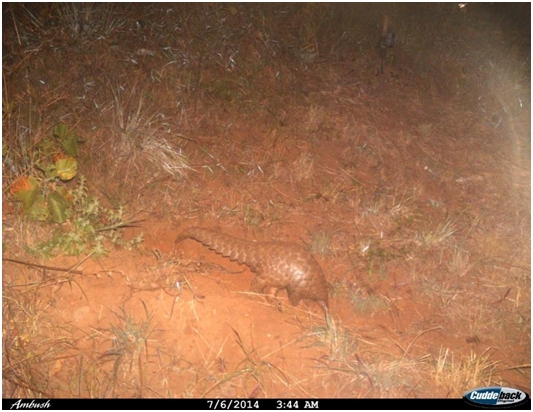
Figure 5. Camera-trap photo of ground pangolin (Manis temminckii) from Mbatwa, this species is in decline all over Africa.
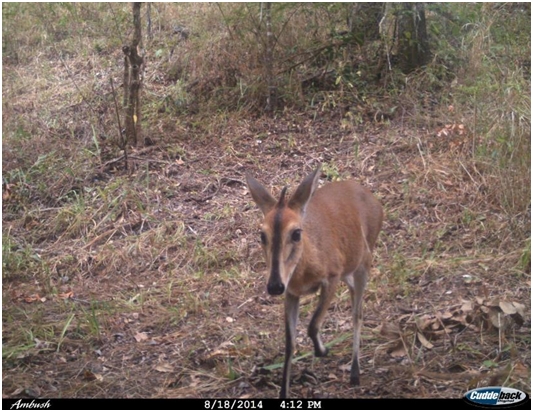
Figure 6. Camera-trap photo of bush duiker (Sylvicapra grimmia) from Lumemo valley, this species has been suspected to be in the area but its presence has never before been confirmed.
Lumemo Valley survey (site 3)
The survey in Lumemo valley (marked as 3 on the map in figure 1) was conducted by Rasmus Havmøller and his two field-assistants, from 26th of August until 4th of September 2014, covering ~100km2. The valley rises slowly in altitude from 500m asl in the south to 800m asl at the northern point and consists mainly of dry grassy miombo woodlands and riverine forest along the medium sized Lumemo river.
In the east/west directions the slopes climb steeply to elevations of over 1000m asl but is still predominantly dry grassy bushlands.
This made the work very hard, as the tall grass was difficult to walk through on the steep slopes under an open sky, and with few trees providing a good shaded spot for setting camera-traps. Nevertheless, the valley is home to the highest recorded number of individual leopards in all surveys.
No less than 15 individuals were identified (8 females and 7 males), with a total of 62 captures/re-captures. Preliminary analysis of the data indicates that there are +6 individuals/100km2 for the valley, yet it is important to highlight that much more work is needed to give a solid estimate.
The Lumemo valley is also were we had the first capture of a bush duiker (see figure 6), which has long been suspected to be in the Udzungwa, but has never been confirmed until now. A total of 24 mammals species was captured by the camera-traps in the Lumemo valley, which is not as high as the dry north or the nearby lowland rainforest, but still an impressive number.
Ndundulu-Luhomero survey (site 5)
The survey in Ndundulu-Luhomero mountains (marked as 5 on the map in figure 1), was conducted by Rasmus Havmøller and his two field-assistants from the 9th to 18th of September 2014, covering ~80km2 with 25 camera-trap stations. This forest, believed to be the oldest rainforest in all of Africa, is situated at the remote western part of the Udzungwa Mouintains National Park, where it is split in half into the national park and the Kilombero Wildlife Reserve.
The forest starts at ~1400m asl and continues until ~2000m, where it is replaced either by low dense scrub or bamboo forest up until 2500m. Surprisingly the rainforest is relatively easy to move around in as there’s a large number of elephant trails, which seems to have been used by for generations.
The higher altitude parts, where the habitat turns to bamboo or scrubs, is far more difficult to move through. Even at this relatively high altitude we regularly found scats and signs of leopards, and the camera-traps revealed no less than 11 individuals (3 males, 8 females), but a surprisingly low capture/recapture rate of just 33 events.
This is possibly a result of the leopards being able to move more randomly in the area, as the forested parts are open with many large trails, and us being unable to locate the largest trail in the more dense high altitude areas. Even so leopards were recorded at camera-traps placed at over 2000m altitude.
Additionally, a fairly high number of photos the Endagered Eastern Arc Mountain endemic, Abbott’s duiker (Cephalophus spadix) was captures (see figure 7).
Also worth mentioning as the photo capture of an African clawless otter (Aonyx capensis) (see figure 8) in a peat swamp located at 1900m asl.
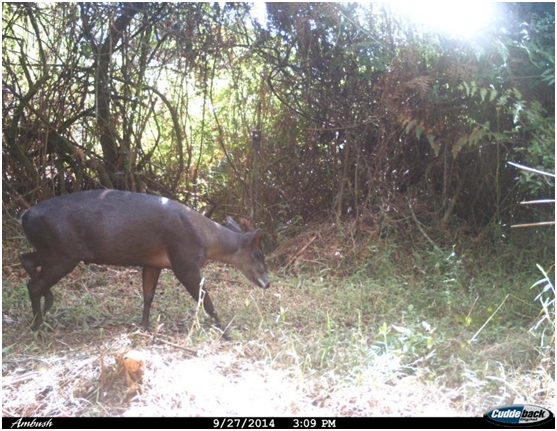
Figure 7. Camera-trap photo of an Abbott’s duiker (Cephalophus spadix) from Ndundulu-Luhomero. This is one of the endemic forest antelopes that are only found in the eastern arc mountains in Tanzania.
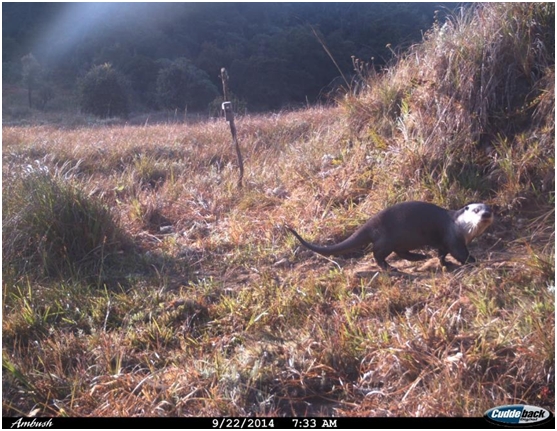
Figure 8. Camera-trap photo of an African clawless otter (Aonyx capensis) from Ndundulu-Luhomero. The camera-traps were placed in a peat swamp at 1900m asl.
Mwanihana survey (site 6)
The survey in Mwanihana forest (marked as 6 on the map in figure 1), was conducted by Rasmus Havmøllers’ two field assistants (Richard Laizzer and Aloyce Mwakisoma) from the 25th of October to 5th of November 2014, setting up 27 camera-trap stations, covering ~120km2. The Mwanihana forest rises from 300m asl all the way to 2100m asl and thus provide a gradient of lowland into montane rainforest.
The forest was until recently requently disturbed by firewood collectors and poachers until 2012, where stricter enforcement was put in place.
As a result the TEAM network has detected a higher abundance of wildlife, but it was still expected that there would be few leopards on the eastern slopes towards the villages and agriculture. Even with a very dense population just a few hundred meters away the recording IMAG0036, illustrates just how close leopards can be to human settlement without anyone noticing. If you turn the volume up, you can hear the music from the village as the leopard passes the camera-trap.
In total 5 leopards where identified (3 females and 2 males), however the capture/re-capture rates are quite low with just 14 captures/re-captures, but as seen from the map in figure 1 (right), the camera-traps where leopards where captured runs along a narrow strip which is the main track further into the mountains, and there is a possibility that these animals are all at the edge of their home-range, and there really are just very few so far in Mwanihana.
The Mwanihana forest is also home to an Endagered and endemic monkey, known as the Sanje mangabey (Cercocebus sanjei), which is only found in this forest and then another some 100km southwest. Being highly alert, these primates are difficult to observe in the wild, but were however caught quite frequently in the camera-traps.
Methods and equipment evaluation
Following an extensive trial period, and based on the camera units we had available, we decided to use at each camera station either pairs of Cuddeback Ambush camera traps with normal, Xenon white flash together or mixed pairs of Cuddeback Ambush and IR-plus BF-HD, the latter camera provided by Fototrappolaggio s.r.l. and mounting a IR Led with no glow (indeed, ‘black’) and recording HD videos. The advantage of the Xenon flash cameras is to take very clear, sharp and colour images at night, which are essential for identifying individual leopard. However, at night these cameras take 30-40 seconds after a picture for a second picture to be taken, due to the flash re-load time. This may lead to missing individuals such as pairs or cubs with mothers. Indeed the use of IR camera that can take videos at night allowed to verify this potential problem. In contrast, camera-traps mounting IR-led flashes cannot take colour images at night.
The good result of this mix of camera models is evident in the videos IMAG0174, IMAG0175, IMAG0176 (attached), where, at first, a female leopard passes the IR video-camera, then the white flash camera goes off and takes a photo. This camera then starts to recharge its flash, but before it is ready to take another photo two large leopard cubs also pass in front of the camera trap (one with a prey in its mouth!), an important event that could only be recorded by the IR video-camera.
On the other hand, the night-time videos of the IR+ cameras make the individual identification more difficult than the colour images obtained with Xenon flash, bearing the risk of misidentifying individuals. This problem is rewarded by day-time video-recordings which are of high quality in the HD models.
The next steps – Analyses !
This project is to our knowledge the largest camera-trap study to date of leopards over this scale of area and heterogenic landscape.
To list the primary targets, estimating leopard density for the park as a whole is aimed to increase the conservation value of the park and hopefully create awareness. Subsequently describing the difference in density from site to site, is aimed at understanding what an “ideal” habitat is for leopards in Udzungwa. As already mentioned it appears that leopards within the Udzungwa has a very limited range, as not one leopard has been found in two surveys.
Liking this finding with the genetic component of this study, to investigate if they can be genetically distinguished as well, will be important knowledge in conservation planning. Finally, investigating the diet of leopards in Udzungwa will add as an additional parameter in understanding whether prey preference might be a factor in their density and distribution.
Preliminary analysis for estimating the density of leopards, using the R package SECR (Spatially Explicit Capture-mark Recapture), gave a leopard density of 4.98 individuals/100km2 for the overall area. However, these results are very preliminary and full analysis has begun to give a more exact estimate. Stay tune!
Acknowledgements
Much appreciation goes to Fototrappolaggio S.r.l. for making available 20 camera-traps to the project, which meant a great deal to achieve the scale of sampling that we realized.
Additional thanks goes to all from the staff of the Udzungwa Ecological Monitoring Centre for logistic support. Our sincere gratitude to the two field assistants Richard Laizzer and Aloyce Mwakisoma for their invaluable assistance in the field. Thanks also to Tanzania national parks (TANAPA) for support and provision of rangers, and other Tanzanian agencies that granted permission for the study (TAWIRI, COSTECH, TSF).

